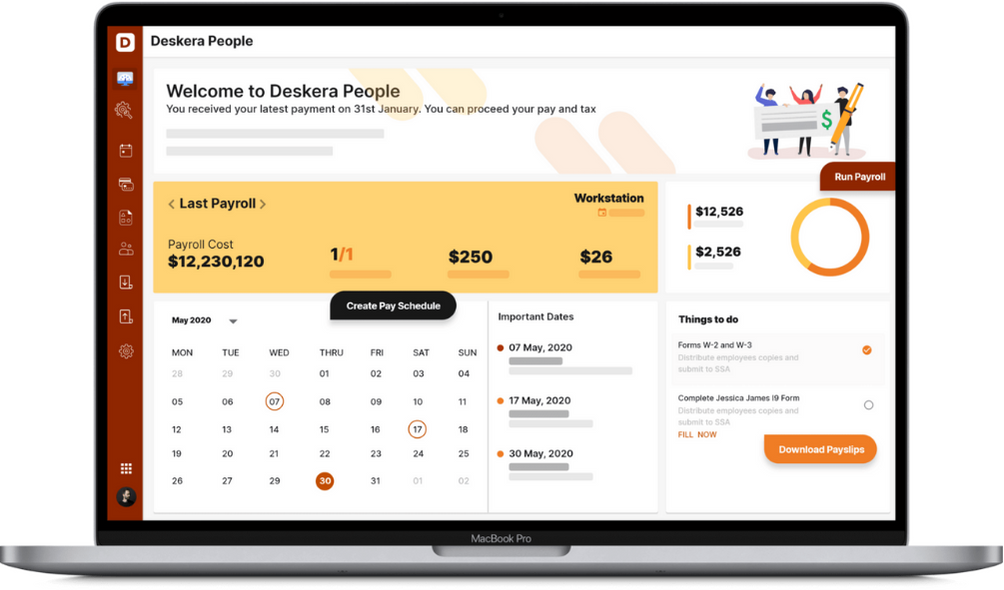Do you give away tips for the services received at bars and other public places? If yes, that is a great way to acknowledge an excellent service but did you know what happens to these later? Some employees in America earn more money in tips as compared to their hourly rates!
The American nationals are often known for giving hefty tips to satisfactory services in hotels, spas, cleaning services and even those who work as gardeners. This gratuity is given to the worker usually at the end of the employment and is a part of the amount received by the minimum wage worker.
Employers of the state in the USA need to comply with the rules and regulations of the state and even federal laws when it comes to calculations of the employee's wages. Moreover, employees in these positions often rely on tips apart from the monthly wages. This topic can be confusing for both employers and employees. Hence, it is necessary to have a correct understanding of the same.
Read to know about minimum wage pay!
What does Tip Credit mean?
To who are tip credits applicable?
How Tip Credit Works?
FICA Tip Tax Credit
What is Tip Pooling?
How to Calculate Tip Credit?
How can Deskera Help You?
What does Tip Credit mean?
Restaurant servers, hairdressers, gardeners, taxi drivers - more than 3 million workers are employed in these jobs in the United States of America. These workers often get tips from the clients for the services. As a result, most employers of various states in America pay these tipped employees less than their actual minimum wage. The reason behind it these workers get enough tips to nullify the difference. This is known as a tip credit. The employer counts it as his obligation to pay minimum wage. He would take a small part of this tip credit only if his employee gets more than 30 dollars in tips from customers every month.
According to federal law, these workers are allowed a tip credit of 5.12$. It implies that employers can tip as little as 2.13$ as a credit tip to employees to ensure that the worker earns 7.25$ every hour, which is the current minimum wage as per federal regulations. These credits are a method to include gratuities in the minimum wage calculations of the workers. It cannot be deducted from the employee's pay without any claims against the minimum wage requirement by the employer.
In simple terms,
Tip credit = (Standard Minimum Wage) - (Tipped Minimum Wage)
To who are tip credits applicable?
The tip credits are only applicable to the employee who has received them. Tipped employees are those who earn at least thirty dollars in tips per month during their limited working hours. Every state in the US has its own criteria of minimum wage, tipped minimum wage and even maximum tip credit.
The employees can get these tips directly from the customers or the tip pool. The employers need to make up with the remaining money for each individual employee if despite the employee’s combined wages and tip credit his salary does not reach the minimum wage level.
The states that follow a minimum tip credit of $2.13 are -
How Tip Credit Works?
The Fair Labor Standards Act, FLSA is the federal law in America that ensures that employers pay a basic minimum wage to every employee which is at current 7.25 dollars. It also permits certain employees to count a certain amount of tips for the tipped employees to receive this tip credit toward the federal minimum wage obligation.
Furthermore, employers can also satisfy the minimum wage criteria by paying a basic per hour wage which is 2.13 dollars and account for the remaining amount through the tips an employee would get for his service. For this, the employer has to inform his employee about how credit tip is counted in the minimum wage.
To know how much is the tip credit in different states of the US, refer to the table below -
Reference: https://www.dol.gov/agencies/whd/state/minimum-wage/tipped#Maryland
FICA Tip Tax Credit
According to the rule, the businessmen who earn gratuities must pay taxes to the federal government on the tips received by their employees as a part of their services. These tips are counted as income under FICA. The restaurant employers might get an incentive from the federal government for accurately reporting the earnings received underworkers’ tips. This income tax credit is not a FICA tip credit. It assists restaurant owners to save an enormous amount per employee as thousands of dollars will not go from the employer’s paycheck. This tax credit is applicable only for employers involved in the food and beverage industry who have a tipped workforce.
What is Tip Pooling?
Usually, even though employers cannot retain any part of the salary of their employees, they have the authority to arrange tip pooling for them. In this, the tip credit from all employees is collected and then redistributed equally amongst the tip-earning workers. This benefits the employers to a great extent during times of internal management of the restaurant or other services. It can also handle the significant disparity amongst the service providers, particularly key positions during the daily operations.
How to Calculate Tip Credit?
Calculation of tip credit can be confusing for most employers if they have ventured into the business for the first time. According to federal laws, to prove that your employees are earning enough, the tip credit must be mentioned in your employee’s pay stub or included in a tip credit report. The employer can calculate its amount on a weekly or bi-weekly basis as per his payment schedule. Furthermore, it’s his duty to explain tip credit to the employees - either verbally or in writing.
Many times, the employers calculate this tip credit amount using Point of Sale (POS) systems to get the calculation automatically. It’s working can be understood as follows:
Hours worked by employee: 30
Total tips earned: 375 dollars
Maximum permitted tip credit: 5.12 dollars
To calculate the per hour tip credit earned in the pay period,
Per hour credit = Total tips Earned / Number of working hours
Hence, the tip credit per hour for the employee would be $375 / 30 which is equal to 12.50$ per hour. Now, this tip credit is greater than the permitted maximum value by the government, 5.12$. Hence, the employer need not pay any further wages to the employee.
Now, let us understand the exact opposite case where the employee has received less tip credit than the allowed value.
Hours worked by employee: 30
Total tips earned: 120 dollars
Maximum permitted tip credit: 5.12 dollars
Per hour credit = 120$ / 30 which equals 4$. Now this $4 < $5.12/ Hence, the employer can claim to be obliged to pay the employee his minimum wage. The concerned difference should be reflected on his payslip. The remaining amount to be included in employee wages is calculated as
$5.12 - $4 = $1.12 per hour
$1.12 x 30 hours = $33.60
Hence, the employer is duty-bound to add a total of 33.60$ to his normal wages to make sure the employee gets his basic minimum wage.
How can Deskera Help You?
Deskera People allows you to conveniently manage leave, attendance, payroll, and other expenses. Generating pay slips for your employees is now easy as the platform also digitizes and automates HR processes.

Conclusion
The US government has ensured every employee involved in the service sector receives a per hour wage as fixed by federal law. It is the duty of the employer and his HR to inform them about tip credit with proper explanation. It should be mentioned on their paystubs and every worker has the right to get minimum wage pay in the US. Deskera is an all in one accounting, payroll and HRMS software that makes it a one-stop solution for employers.
Keynotes
- Every employee in the US gets a per hour wage for his services in restaurants, cab drivers, hairdressers, gardeners and other service providers.
- The minimum tip credit for an employee has been fixed at 2.13$ per hour as per federal law. Tip credit = (Standard Minimum Wage) - (Tipped Minimum Wage)
- The FSLA ensures the basic minimum wage of an employee is 7.25$. Per hour credit = Total tips Earned / Number of working hours
- The employer can use a tip pool to equally distribute the tips earned by employees and avoid distinguishing amongst them for key positions.
- The employer must report the tip credit on an employee’s paystub and even report it in his report to the federal government
Related Articles











